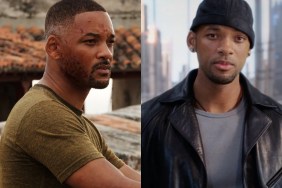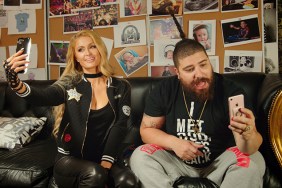Kevin Macdonald’s latest film, How I Live Now, is still playing on VOD and in theaters. Saoirse Ronan stars as Daisy, an American sent to live in the English countryside around the same time that war breaks out and it becomes a police state. Separated from her new family, Daisy tries to find her way back to the man with whom she fell in love. We spoke with Macdonald when he came to Los Angeles to discuss the film, and we called him out on something Ronan told us in Toronto.
CraveOnline: Saoirse told us you did not want to cast her at first.
Kevin Macdonald: [Laughs] Well, that’s not quite true. It’s not that I didn’t want to cast her. It’s just that I didn’t think of her for the role I suppose because I wanted an American and I wanted somebody who was unknown. I had it in my head that it should all be a cast of unknowns. I looked for a long time here in the States, had a great casting director, and we looked and looked and couldn’t find anybody.
Then the casting director in the U.K. said, “What about Saoirse?” And I said, “Well, she’s great. She’s a great actress but she’s Irish and she’s a bit older than the character who was meant to be maybe 16.” She said, “Well, you should just meet her.” And of course she walked in and I looked at her and was like, “All right, you’re so fantastic.” Then she read a scene and we were all in tears. Instantly I thought, what an idiot I am. Why didn’t I think of her to begin with? We would’ve saved a lot of time and pain.
Were there any American actors you were seeing?
I met a lot of people, a lot of the people you would expect, the teenage American actors as well as unknowns. I couldn’t find anybody who had the complexity and the edge I suppose. I felt Daisy’s such a complicated character. That kind of teenage rebellion attitude-y kind of thing that she’s got, I didn’t feel like there was anybody I met who I thought I could believe that from. Somehow people I met just didn’t seem quite right, but that’s the magic of cinema, that you think you’re looking for one thing and then somebody else comes along and they show you you weren’t looking for that, you were looking for this. This is right and I understand this character.
What is your process for developing scripts for your narrative films?
There’s a writer called Jeremy Brock who did an earlier version of this script and worked on The Eagle with me and was also one of the two writers on The Last King of Scotland. So I worked with him three times actually. This film, when I got involved, there was already a script and it was written by two men. I read it and I thought, “I don’t believe this character, Daisy.” I’d read the book and loved the book and thought it was very original and beautiful, but I couldn’t find that voice in the script.
So I hired a young female playwright called Penelope Skinner whose work I admired, who’s some tough feisty feminist kind of playwright. She was the one who found the voice for Daisy I think. Obviously having never been a teenage girl, it was hard for me to get that correct but you know it’s right when you see it.
We had a big cycle of end of the world movies several years ago. Where in all of that did you start thinking of this book and this story?
Well, this book was published a good 10 years ago now, eight years ago maybe. For me it felt very different than those other movies, and different for a number of reasons. Obviously because it’s an end of the world story with kids, but also it takes place in the English countryside and it’s not about seeing the mass destruction of New York and the Golden Gate Bridge collapsing. It’s about being away from all of that but understanding the consequences of it and how it affects our characters. So this film, the destruction, the war or whatever is taking place over the hill or 100 miles away, or you arrive at a place that it’s happened but you don’t necessarily see it happening. So that was the thing that I felt was original about this book and this project.
Is How I Live Now your first love story?
I guess it is. I’ve done things which have a love story element in them, a romantic element in them of one sort or another. State of Play is a romantic story at it’s heart. Last King of Scotland even has a love story in it but this is the first one which I can say is a love story. That’s what it is. It is a love story. It’s about a girl who can’t love, can’t be loved, doesn’t feel she’s loved who learns to be loved and learns to give love and is transformed through the course of this tale. I was attracted to that. I wanted to make a love story. I wanted to make a story which, although it’s quite dystopian and dark and disturbing in some ways, is at its heart positive, a very positive human message.







